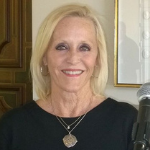Share
Tough-on-crime attitudes towards drug use have exacerbated our society’s problems with substance use disorders (SUDs), leading to mass incarceration and overdose deaths (DPA, n.d.-a). It has also filtered into real systemic problems with drug education for minors (DPA, n.d.-c), adding to the crumbling of effective communication between generations. While experts talk about the importance of prevention and early intervention when it comes to teen substance use, too often that prevention is coopted by criminal justice tactics (Medina-Mora, 2005). We need to be very careful and clear about how effective prevention is defined.
During the 1970s and 1980s, many health care professionals encouraged parents to enact “tough love” tactics with their adolescents who were smoking marijuana and exhibiting behavioral problems (Szalavitz, 2007), as if drug use was simply willful, out-of-control, antisocial behavior. I was given this advice from counselors for my son, as were other parents I knew struggling to find help for their teenagers. Without knowledge of other available options, some parents gave in to coerced treatment thinking they were doing the right thing in order to save their children’s futures. Unfortunately, that often backfired dramatically. Wilderness therapy camps, for example, where teenagers were “kidnapped” and taken to long-term, intensive care programs to help them reset and learn new coping skills became popular (Szalavitz, 2007)—these were often quite expensive, traumatic, and disruptive to the family unit. According to an article in High County News in January 2020,
Studies finding benefit from the forced removal of troubled teens from their homes for placement in residential settings are few . . . And while some research has suggested that residential treatment can lead to short-term progress for some children, there is little evidence that such an approach offers long-term advantages over therapy offered at or near home, and for a far lower price (Kaplan, 2020).
When my older son was in seventh grade in the early 1980s, his whole demeanor changed. He had been an active, happy, and loving kid, but when he entered junior high school he became sullen and secretive, and he gave up his interest in tennis and other sports. Thinking that he might be depressed and dabbling in drugs, I sent him to see a counselor. After a few sessions she declared that his problem was his father’s drinking and that he did not need more counseling. Although that may have been part of the problem, and did result in conflict between his parents, my son was very smart and quite adept at manipulation, so this was just the response he needed to skate free and avoid taking responsibility himself. In tenth grade he was kicked out of high school for having marijuana in his locker and consequently sent to the “bad boy” school, as if they were picking out rotten fruit. There his educational challenges and expectations were severely diminished. It would be years of increasing problems before we got him into a treatment program, just before he turned eighteen and would be free of parental control. Then he was arrested at age twenty for marijuana possession, which began his journey within the criminal justice system for the next eleven years—the opportunities for treatment dwindled while his drug dependence grew. This experience led me to the understanding that early intervention must offer programs based on open listening, empathic understanding, and respectful communication. Young people who are feeling distanced and depressed do not respond well to anger, punishment, and shaming.
Although I am deeply grateful for any opportunities my two sons have had for SUD treatment through the decades, there were times when I felt that the experts really did not know what they were doing with this complex disorder and relied on easy answers. The concept of codependency was touted widely for decades, with parents being made to feel they were somehow part of the problem. This philosophy was not based on facts or science, and unfortunately made parents out to be scapegoats. I also believe that this bad advice led to feelings of abandonment and hopelessness in many adolescents, and precious lives being lost unnecessarily to overdose and suicide.
I recognize there is a fine line between when parents are helping and when they are hurting the situation with troubled teens. I believe mothers are hardwired to believe that their children are telling the truth and that they are okay, especially since there is so much shame involved in admitting to a drug problem in the family. At times this denial can complicate the problem. Without stigma, perhaps parents and counselors could work more cohesively together to get to the heart of the problems teens are experiencing. My son, Elon Burns, CADC-II, points out,
The fear and shame that loved ones feel powers the strength of the denial. If we could break down the stigma we could take a more open and honest look at the situation without blame and with the knowledge that this disorder can happen to anybody. It doesn’t make the teen a bad or faulty person, nor does it throw blame on the parent and family members. Together we would have a more optimal opportunity to work as a cohesive team to address best options for support (personal communication, January 3, 2022).
My husband, David Bergman, MD, is a retired psychiatrist who specialized in treating adolescents with co-occurring disorders. He is my second husband and a wonderful stepfather to my two sons. Over the years we have had many lively conversations about the shortcomings of addiction treatment and best practices. In discussing the particular dangers of early drug use with youth, he says, “The adolescent brain is a complex organ that is undergoing continuous change and evolution in the direction of maturation, which is why it is very susceptible to the effects of mind-altering phenomenon, whether they be impactful situational factors or chemical substances” (personal communication, January 2, 2022).
In Dr. Bergman’s book Kids on the Brink: Understanding the Teen Suicide Epidemic, he states that,
Teens often use alcohol and drugs to try to overcome feelings of depression, but sooner or later their effort backfires . . . The youngster who has feelings of hopelessness, despair, and self-loathing nevertheless knows that there is another place in life, a happy, satisfied place where existence is comfortable and rewarding. Since he’s oriented toward action, he welcomes any activity that will carry him towards satisfaction and away from despair (1990, p. 76).
This is what we often refer to as “self-medicating.” Given the understanding of how delicate the situation is, it is unfathomable to me that we have trodden so heavily over the years by using punishment and retribution to handle a sensitive and complex disorder. We must reevaluate the way that we have been involving youth in the prevention process.
Every year Drug Abuse Resistance Education (DARE) celebrates its success as a drug prevention program in our public schools, despite the lack of documented efficacy (Lynam et al., 1999; Berman & Fox, 2009). But beyond the t-shirts, freebies, and slogans, where is the evidence that “Just Say No” rhetoric has been effective at preventing drug experimentation and drug use among students? There have been many studies conducted which indicate that DARE failed, including a study that examined the impact of Project DARE ten years after administration and found that “A total of 1,002 individuals who in sixth grade had either received DARE or a standard drug-education curriculum, were reevaluated at age twenty. Few differences were found between the two groups in terms of actual drug use, drug attitudes, or self-esteem, and in no case did the DARE group have a more successful outcome than the comparison group” (Lynam et al., 1999).
I believe one of the biggest problems with DARE is that it was introduced to school-aged children by uniformed police officers with a focus on punitive consequences with the philosophy of “scaring them straight.” The fact that our children continue to be exposed to drugs in our schools, despite years of expensive prevention programs, is of grave concern, particularly now with gun-carrying campus police presence. While in principle I support drug prevention programs for children, we must use our resources to provide prevention education based on truth, respectful interactive conversation, and proven methods. To continue to support programs that have no proven success is irresponsible and wasteful.
Alternative Education Programs
I would like to see educational curricula that are based on ineffective, zero-tolerance orthodoxy replaced with honest and accurate drug education in our schools like the following alternative education resources.
Safety First
Safety-First: A Reality-Based Approach to Teens and Drugs (1999), was authored by Marsha Rosenbaum, PhD, and proposes an alternative program to equip students with information they trust in order to make responsible decisions.
Safety First had its initial pilot in one high school in New York City in the spring of 2018, and in the spring of 2019, the Drug Policy Alliance expanded the pilot to a district-level collaboration in San Francisco, piloting the curriculum in five select San Francisco Unified School District schools (DPA, 2019). Led by an external evaluator from the Research Foundation at City University of New York, both evaluations show significant increases in students’ knowledge of harm reduction, abstinence, and how to detect and respond to a drug overdose, among other indicators of success (DPA, 2019).
Just Say Know
Students for Sensible Drug Policy offers peer education and training called “Just Say Know.” This is a series of drug education modules aimed at promoting open and honest dialogue around commonly used substances. The program aims to equip young people with harm-reduction tools and skills as it relates to the specific substance, though it can be applied to substance use generally (SSDP, n.d.).
The concept of “Just Say Know” instead of “Just Say No” aligns with harm-reduction strategies, which studies have shown leads to healthier outcomes (Des Jarlais, 2017). I believe that we must start talking with teens, rather than at them, in order to engage them in sharing their experiences without judgment so as to work together to find positive solutions to drug use, SUDs, and the opioid overdose crisis.
For far too long, schools have boasted zero tolerance policies. When my second son was in high school in the early 1990s, random drug testing of children in athletic programs was implemented. My son, who was a member of the water polo team, was the first to be tested. I doubt that it was random, since his older brother had been kicked out of the same school for possession of marijuana a few years earlier. I wondered then if the policy was really about prevention or just a tool to identify “bad” kids. Although his results were negative, I later learned that he and several others on the team had already been dabbling with drugs and we might have lost precious time in offering him help, as he eventually went on to have a heroin addiction.
Relationships between parents and teachers are often tenuous, so trust is a precious commodity. More time and resources should be spent on health care professionals who can spot at-risk kids and guide them to services. Drug testing creates an atmosphere of distrust and often deters students from extracurricular activities that can help these at-risk kids navigate the troubling waters of adolescence. There is no proof that student testing deters drug use, and it might silence individuals who would otherwise have reached out for help. “Zero tolerance” should mean that all children deserve counseling and support when they need it.
A New PATH
In 1999, I cofounded A New PATH (Parents for Addiction Treatment and Healing), which works to reduce the stigma associated with addictive illness through education and compassionate support, and to advocate for therapeutic (rather than punitive) drug policies. In 2009, we began a national collaborative coalition titled “Moms United to End the War on Drugs,” with annual campaigns to end the stigmatization and criminalization of drug use and people with SUDs. This became a global effort, with mothers around the world leading efforts to reform drug policies and promote harm-reduction strategies for the sake of our children and future generations.
Since 2014 we have been conducting overdose prevention training and distribution naloxone (Narcan), a safe drug that can quickly reverse an accidental opioid overdose, as part of our national “Ask Mom How to Save a Life” campaign. Our work is targeted to systemic change, allowing for adoption of harm-reduction strategies in addressing the opioid overdose crisis, so we have been conducting trainings for individuals, homeless communities, parent groups, the probation department, residential treatment, and sober living homes for years.
Now we have a time-sensitive need to bring these trainings into schools as the overdose crisis continues to rage and youth are experimenting with drugs at earlier ages. According to the National Center for Drug Abuse Statistics (NCDAS), at least one in eight teenagers have abused an illicit substance in the last year, with drug use among eighth graders rising by 61 percent between 2016 and 2020 (n.d.).
All health care personnel and administrators should have this lifesaving drug on hand, and school nurses have approached us and indicated a serious need to have quick access to Narcan in response to problematic drug use and overdoses on campus. However, we have frequently been met with conservative and stigmatizing thinking that children should not learn more about drugs, as this might constitute permission to use or reduce the fears inherent for some in the mystery of drug use.
In many districts in San Diego County nurses now have Narcan at school, but during the pandemic were not often on campus on a daily basis, according to my communication with nurses in the San Diego Unified and Grossmont Union high school districts in 2020, so this simply is not enough. We hear regularly from parents and nurses that teens are overdosing in the bathrooms at school as well as in their bedrooms at home, but unfortunately it is still difficult to break past the barriers of stigma and judgment in order to get Narcan directly into the hands of youth. Since we know that many teens are experimenting with drugs or know others who are using drugs (and this could be parents or guardians), they should be equipped with the means to reverse an overdose. Greater knowledge of all drugs and their interaction is also important, as methamphetamine. marijuana, and narcotics as well as a variety of pills are being used by teens.
The synthetic drug fentanyl is up to fifty times stronger than heroin and is a major contributor to overdose in the United States (CDC, 2022). Powdered fentanyl looks like other drugs so it is often mixed with drugs such as cocaine and methamphetamine and made into pills. People are often unaware that their drugs might be laced with fentanyl, so our organization is distributing fentanyl test strips. Over 150 people die every day from overdoses related to synthetic opioids, including youth (CDC, 2022). There is nothing more tragic than losing young people to accidental overdose before they have had the opportunity to live full lives. Fentanyl test strips are another harm-reduction tool that we believe youth should have in today’s world.
I feel that we need to engage youth directly, as they can be important partners in promoting honest education, harm-reduction strategies, and overdose prevention trainings with Narcan distribution. What could be more empowering than the ability to save a friend’s life? Over the past seven years we have trained over eleven thousand people through our program in San Diego County alone, and have 2,184 overdose reversals reported directly to A New PATH. In response to the red tape of school districts, our outreach and trainings are now directed to after-school youth programs, where we are helping to build powerful teen advocates.
Systemic Racism and Mental Health
We are living in a triple crisis of COVID-19, opioid overdose, and systemic racism. There is no doubt that the war on drugs disproportionately affects communities of color and poverty (DPA, n.d.-b). Parents across the cultural spectrum mourn the loss of their children to an overarching and punitive criminal justice system, but dramatically more so in black and brown communities. Black Americans are incarcerated at more than five times the rate of white Americans (Nellis, 2021). This injustice cannot be overlooked and swept aside as we grapple with the issues of diversity, equality, and what that means for all youth. In addition, the suicide rate among black youth has doubled since 2014 (Jones, 2022). The cause could be that they are more at risk for anxiety and despair when you consider the trauma they have experienced, and many people with mental health issues often do not seek health care due to stigma, fear, and mistrust (APA, 2020).
I am at an interesting time in my life, as both of my sons have survived decades of heroin addiction, are in long-term recovery, and work as drug and alcohol counselors. We can now discuss our journeys together, alternatives to old drug treatment models, and the essential need to reduce stigma and adopt harm-reduction strategies. Fortunately, there is now a greater understanding of the concept of many pathways to recovery, including medication-assisted treatment (MAT). Abstinence-only goals can add to stigma and despair, so we must address this reality and adjust our thinking about what constitutes success and recovery. With adolescents our reactions to their drug use is important. I can look back at mistakes I made out of fear and shame that pushed my children away from honest communication and hindered a therapeutic response. If we react with anger and disappointment, it may complicate and worsen a problem that could become an opportunity to seek help and support.
There are no one-size-fits-all answers, and we still have a long way to go in finding the best ways to intervene when young people are getting caught up in the terrible maze of substance use and addiction. But with open minds the absence of judgment and discrimination, and more knowledge and understanding about the intrinsic nature of SUDs, perhaps we can smoothly engage young people with the help that they need early on in order to manage their substance use and help them live fulfilling lives.
References
American Psychiatric Association (APA). (2020). Stigma, prejudice, and discrimination against people with mental illness. Retrieved from https://www.psychiatry.org/patients-families/stigma-and-discrimination
Bergman, D. (1990). Kids on the brink: Understanding the teen suicide epidemic. Washington, DC: Psychiatric Institute of America Press.
Berman, G., & Fox, A. (2009). Lessons from the battle over DARE: The complicated relationship between research and practice. Retrieved from https://bja.ojp.gov/sites/g/files/xyckuh186/files/media/document/CCI_DARE.pdf
Centers for Disease Control and Prevention. (CDC). (2022). Fentanyl facts. Retrieved from https://www.cdc.gov/stopoverdose/fentanyl/index.html
Des Jarlais, D. C. (2017). Harm reduction in the USA: The research perspective and an archive to David Purchase. Harm Reduction Journal, 14, 51.
Drug Policy Alliance (DPA). (2019). Safety first. Retrieved from https://drugpolicy.org/resource/safety-first-real-drug-education-teens
Drug Policy Alliance (DPA). (n.d.-a). Drug war statistics. Retrieved from https://drugpolicy.org/issues/drug-war-statistics
Drug Policy Alliance (DPA). (n.d.-b). Race and the drug war. Retrieved from https://drugpolicy.org/issues/race-and-drug-war
Drug Policy Alliance (DPA). (n.d.-c). Real drug education. Retrieved from https://drugpolicy.org/issues/real-drug-education
Jones, C. (2022). Black youth face rising rates of depression, anxiety, suicide. Retrieved from https://edsource.org/2022/black-youth-face-rising-rates-of-depression-anxiety-suicide/666405
Kaplan, A. (2020). Do wilderness therapy programs really work? High Country News. Retrieved from https://www.hcn.org/articles/wilderness-do-wilderness-therapy-programs-really-work
Lynam, D. R., Milich, R., Zimmerman, R., Novak, S. P., Logan, T. K., Martin, C., Leukefeld, C., & Clayton, R. (1999). Project DARE: No effects at ten-year follow-up. Journal of Consulting and Clinical Psychology, 67(4), 590–3.
Medina-Mora, M. E. (2005). Prevention of substance abuse: A brief overview. World Psychology, 4(1), 25–30.
National Center for Drug Abuse Statistics (NCDAS). (n.d.). Drug use among youth: Facts & statistics. Retrieved from https://drugabusestatistics.org/teen-drug-use/
Nellis, A. (2021). The color of justice: Racial and ethnic disparity in state prisons. Retrieved from https://www.sentencingproject.org/publications/color-of-justice-racial-and-ethnic-disparity-in-state-prisons/
Rosenbaum, M. (1999). Safety first: A reality-based approach to teens, drugs, and drug education. New York, NY: The Lindesmith Center.
Students for Sensible Drug Policy (SSDP). (n.d.). Just say know drug education. Retrieved from https://ssdp.org/our-work/just-say-know/
Szalavitz, M. (2007). The cult that spawned the tough-love teen industry. Mother Jones. Retrieved from https://www.motherjones.com/politics/2007/08/cult-spawned-tough-love-teen-industry/
Gretchen Burns Bergman is the cofounder and executive director of A New PATH (Parents for Addiction Treatment & Healing) and lead organizer of the Moms United to End the War on Drugs national campaign.








 Counselor Magazine is the official publication of the California Association of Addiction Programs and Professionals (CCAPP). Counselor offers online continuing education, article archives, subscription deals, and article submission guidelines. It has been serving the addiction field for more than thirty years.
Counselor Magazine is the official publication of the California Association of Addiction Programs and Professionals (CCAPP). Counselor offers online continuing education, article archives, subscription deals, and article submission guidelines. It has been serving the addiction field for more than thirty years.